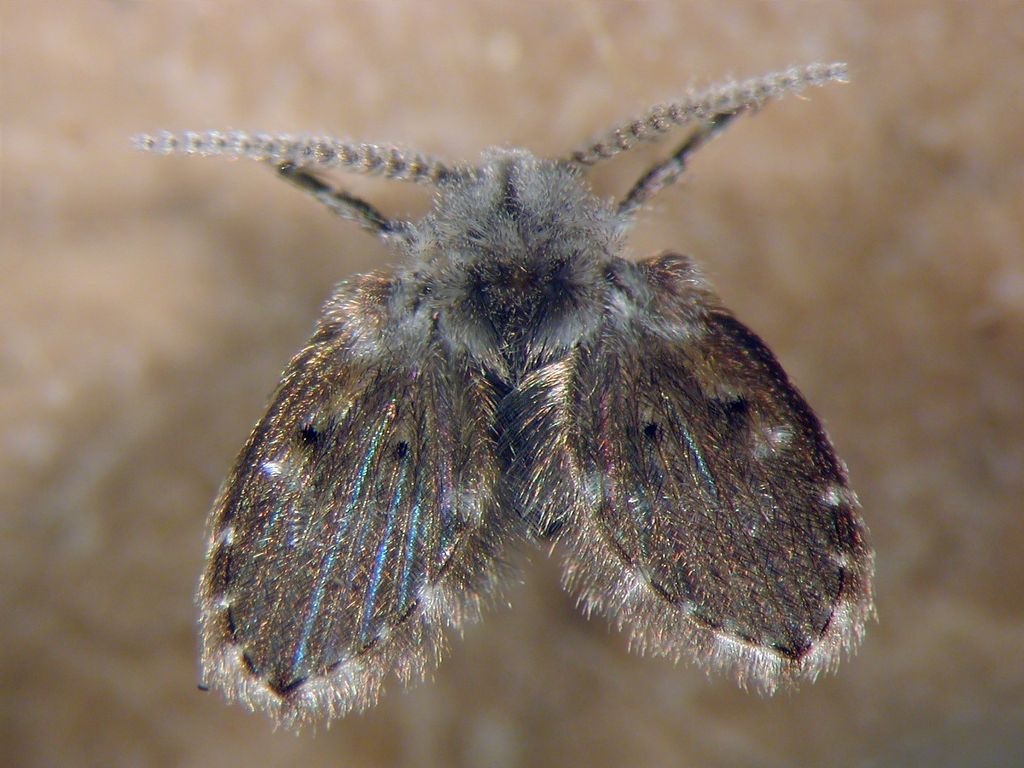In this article, we are going to talk about the life cycle of one of the most unwanted insects, drain flies or also called as moth flies. They are recognizable by their hair-covered body and visible veins that decorate their wings.
And no, we are not talking about fruit flies here. People often get these two insects confused with each other.
Since standing water or leakage can appear in any household, you can run into some drain flies at any time. This usually happens after not cleaning drains or other wet areas for a while. It is a common problem to deal with after a couple of weeks of vacation.

How Long do Drain Flies Live?
It takes about a full month for the drain fly to go through its entire life cycle. This gives them plenty of time to reproduce in the moisty, organic matter they can find in your house. To be more precise, they start by spending time in the larval stage for 8-24 days.
They go through the pupal stage and then continue to live about two weeks as adults. The time moth flies spend in the larvae stage depends on temperature, oxygen concentration and other environmental factors.
Although they live as adults for two weeks, they are certainly not going to disappear after that time period. What makes moth flies so annoying is that new adults are constantly going to appear, making pest control inevitable.
Although adult drain flies do not bite, they can transmit a wide range of bacteria.
How do Drain Flies Breed?
For drain flies, any standing water or organic matter they can find is ideal for breeding. They start to lay their eggs randomly in the polluted water. You are most likely going to find them in the gelatinous film that can be found in any uncleaned drain.
In households, drain fly larvae typically develop in bathrooms and kitchens. It is not unusual for them to breed in air conditioner pipes, around garbage cans or anywhere around the house where rain-water can accumulate.
How are Drain Flies Born?
The main goal of the female drain fly is to find some polluted water and start laying eggs into the gelatinous film. A single female can lay up to 100 eggs after mating. Then, it takes about 48 hours for the eggs to hatch in the decomposing organic matter.
Since they are born as larvae, you are not going to see them in that 8-24-day larvae stage. In the meanwhile, they are going to eat any microscopic plant or decaying sediment they can find around them. If the temperature and oxygen levels don’t fluctuate that much, they are going to develop faster.
How do Drain Flies Form?
After the drain fly eggs got hatched, moth flies start the first part of their life cycle as larvae. Then, they pretty much just stay in the polluted water they were born into to eat and grow. Once they are developed enough, they enter the pupal stage.
- Related article: Drain Fly Identification
Pupation is a part of their life cycle that lasts for 20 to 40 hours. This allows them to become the annoying moth flies that people encounter in their houses. Being fully developed also means that they are ready to breed right off the bat.
For these insects, mating usually happens within the first couple of hours after the pupal stage.
Where do Drain Flies Lay their Eggs?
The most ideal places for drain flies to lay their eggs include standing water and moisty spots in general. If there is a leakage in your house or a drain that you haven’t cleaned for a while, then moth flies can potentially reproduce there.
They can also lay eggs under plants, around garbage containers, wet sewers, under the washing machine and similar places. All they need is polluted water that is there to stay for a few days, or even weeks. The decaying organic matter and gelatinous film that forms there is where their larvae can absolutely thrive.
Now these flies are pretty bad at flying so you can easily find their breeding area. It is always near the adults because the whole spectrum of their diet can be found in these infested areas.
Are Drain Flies Larvae Harmful?
The thing about drain fly larvae or also known as drain worms is that they are rather hardy. They can survive the largest temperature changes and lack of oxygen as well. But are these larvae harmful or is it just the adults? The answer is: not really.
Although they live in the dirtiest standing waters you can imagine, they also live in it while in the larvae stage. Drain fly adults are a different case because they can spread all that filth around the house. They can come in contact with foods or things you use in the kitchen, spreading all the bacteria.

They can certainly carry bacteria and microorganisms but they are not able to transmit diseases to us humans. Drain fly larvae, on the other hand, can be beneficial. If the drain they live in is clogged, they are able to help by breaking down all the built-up slime and organic matter.
Do Drain Flies Die in the Winter?
As we mentioned, drain fly larvae can be extremely hardy. They can survive without oxygen for a while and also endure wild temperature fluctuations. However, this doesn’t mean they can survive everything. Warm, shallow standing waters are certainly the best for them.
Once the Winter kicks in, they are going to die instantly if there is no warm indoor place where they can stay. They can survive in your warm house throughout the winter but the fact is that you can kill them with some cold at any time. Winter is the time for the simplest pest control method.
At 70 degrees Fahrenheit and lower, they are not able to reproduce. All they can do is hide and hibernate until the temperature increases a fair bit. This is why people usually have a problem with moth flies during the Summer.


